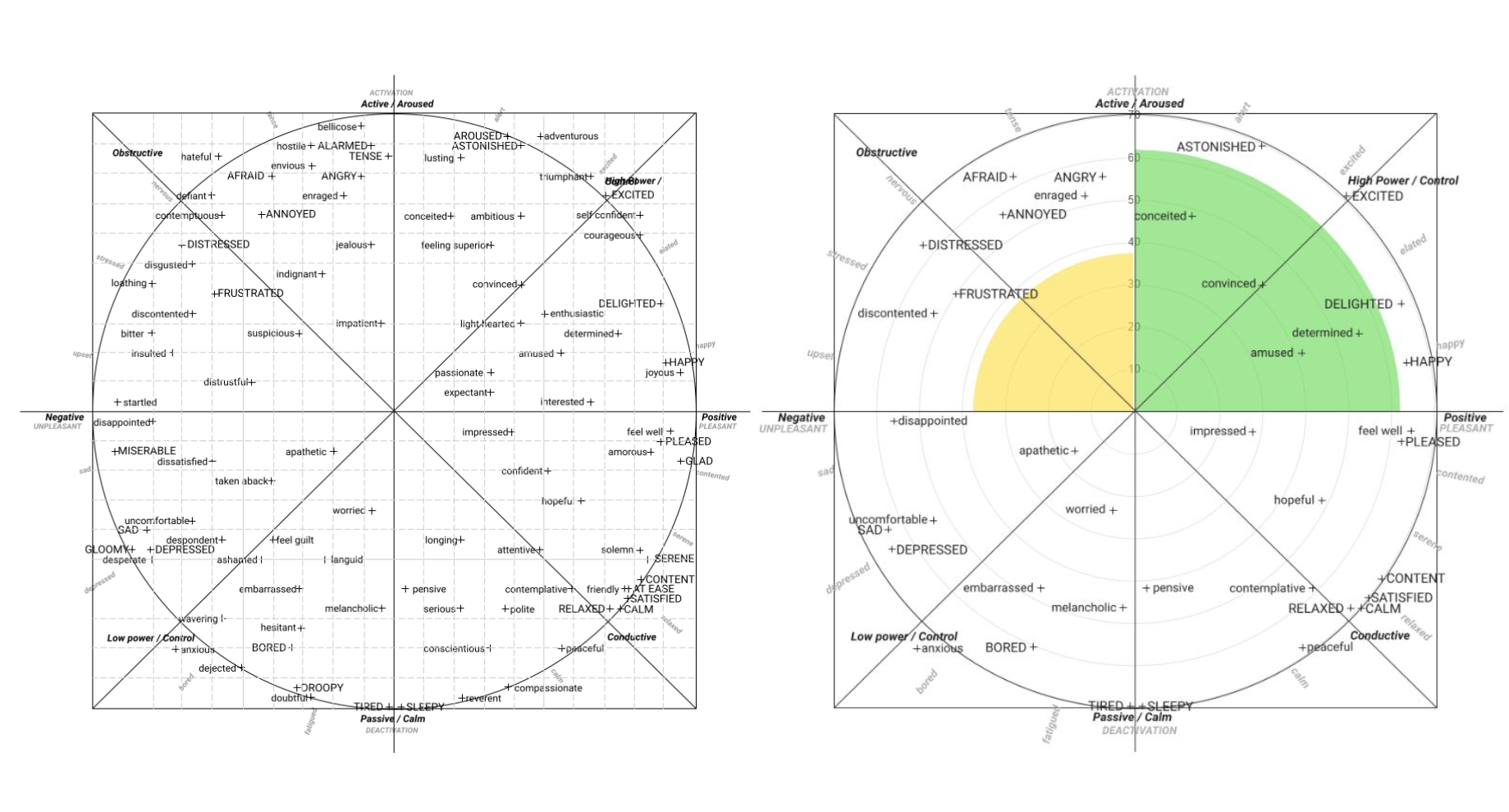Introduction to Emotion AI and the Circumplex Model of Affects
Emotion AI, or artificial intelligence designed to recognize and interpret human emotions, has seen substantial advancements in recent years, particularly through the analysis of facial expressions. These expressions offer a window into a person’s emotional state, making accurate analysis crucial for effective AI applications. To achieve this, the Circumplex Model of Affects, developed by James A. Russell in the late 1980s, plays a pivotal role. This model, represented as a circular diagram, structures emotions within a two-dimensional space of arousal and valence, enhancing the accuracy and range of Emotion AI systems.
Understanding the Circumplex Model of Affects
Core Dimensions: Arousal and Valence
The Circumplex Model organizes emotions based on two main axes:
- Arousal: This axis measures the level of physiological activation or intensity of an emotion, ranging from calmness to high stimulation.
- Valence: This axis gauges the emotional quality, categorizing emotions as positive (pleasant) or negative (unpleasant).
By mapping emotions in this two-dimensional space, the model allows for a nuanced classification of feelings, extending beyond simple binary categories to include a spectrum of emotional states. For instance, joy and excitement are positioned within the high arousal and positive valence quadrant, while contentment and serenity appear in the low arousal and positive valence quadrant.

Enhancing Emotion AI with the Circumplex Model
Advantages of Integration
The integration of the Circumplex Model into Emotion AI systems offers several benefits:
- Enhanced Accuracy and Precision: By applying a multi-dimensional approach to emotion analysis, AI can more precisely recognize and interpret facial expressions.
- Broader Emotion Spectrum: The model facilitates the detection of subtle emotional nuances, enabling AI to categorize a comprehensive range of emotions.
- Personalized Interactions: Emotion AI can tailor responses based on the specific emotional states identified, providing interactions that are empathetic and contextually appropriate.
- Research and Insights: Utilizing this model can align AI functionalities with psychological research, aiding in the understanding of human emotional expressions.
Application in Technology
Emotion AI using the Circumplex Model is increasingly prevalent in various sectors, including customer service and personal assistants, where understanding and reacting to user emotions are crucial. Here at MorphCast, we have leveraged this model to deliver sophisticated Emotion AI solutions, ensuring a responsive and engaging user experience. Harnessing the Circumplex Model of Affects MorphCast delivers a comprehensive and highly accurate analysis of user emotional states. It ranks as the most exhaustive facial emotion recognition solution in the market, offering over 100 advanced capabilities for recognizing facial expressions.
Challenges in Implementing the Circumplex Model
While beneficial, the integration of the Circumplex Model into Emotion AI systems is not without challenges:
- Complexity of Implementation: Effective application requires sophisticated algorithms and extensive datasets to train the AI.
- Individual Variability: Emotional expression can vary greatly between individuals, complicating the standardization of emotion recognition.
- Ethical Considerations: The deployment of Emotion AI, especially in sensitive areas such as surveillance or hiring, necessitates careful ethical considerations to prevent misuse and protect privacy. Ethical guidelines and oversight are crucial.
Broader Implications and Scientific Background
Contributions to Multiple Disciplines
The Circumplex Model not only advances AI technology but also enriches several scientific fields:
- Psychology: It offers frameworks for understanding how emotions are experienced and expressed, grounded in theories like the James-Lange and Cannon-Bard theories.
- Neuroscience: Studies the brain mechanisms behind emotional responses, highlighting specific brain regions and neurotransmitters involved in emotional processing.
- Sociology and Anthropology: Examines the social and cultural dimensions of emotions, recognizing the diversity in emotional expression across different cultures.
- Emotional Intelligence: Promotes the development of skills to manage and utilize emotional responses effectively in personal and professional settings.
- Evolutionary Psychology: Views emotions as adaptive responses that have evolved to increase survival and reproductive success.
Future of Emotion AI
As Emotion AI continues to evolve, the insights from the Circumplex Model will remain invaluable in enhancing the technology’s capabilities. This model not only aids in the academic understanding of emotions but also serves as a cornerstone for the ongoing development of AI technologies, ensuring that they can respond accurately and appropriately to human emotional states.
Conclusion
The integration of Russell’s Circumplex Model of Affects into Emotion AI represents a significant advancement in our ability to understand and interact with technology on a more human level. By mapping a wide array of emotions in a structured 2D space, this model provides a sophisticated framework that improves both the technology’s accuracy and its application across various domains. As Emotion AI continues to play a vital role in both technological and psychological arenas, it is essential to continue refining these systems, ensuring they operate ethically and effectively in responding to human needs.



